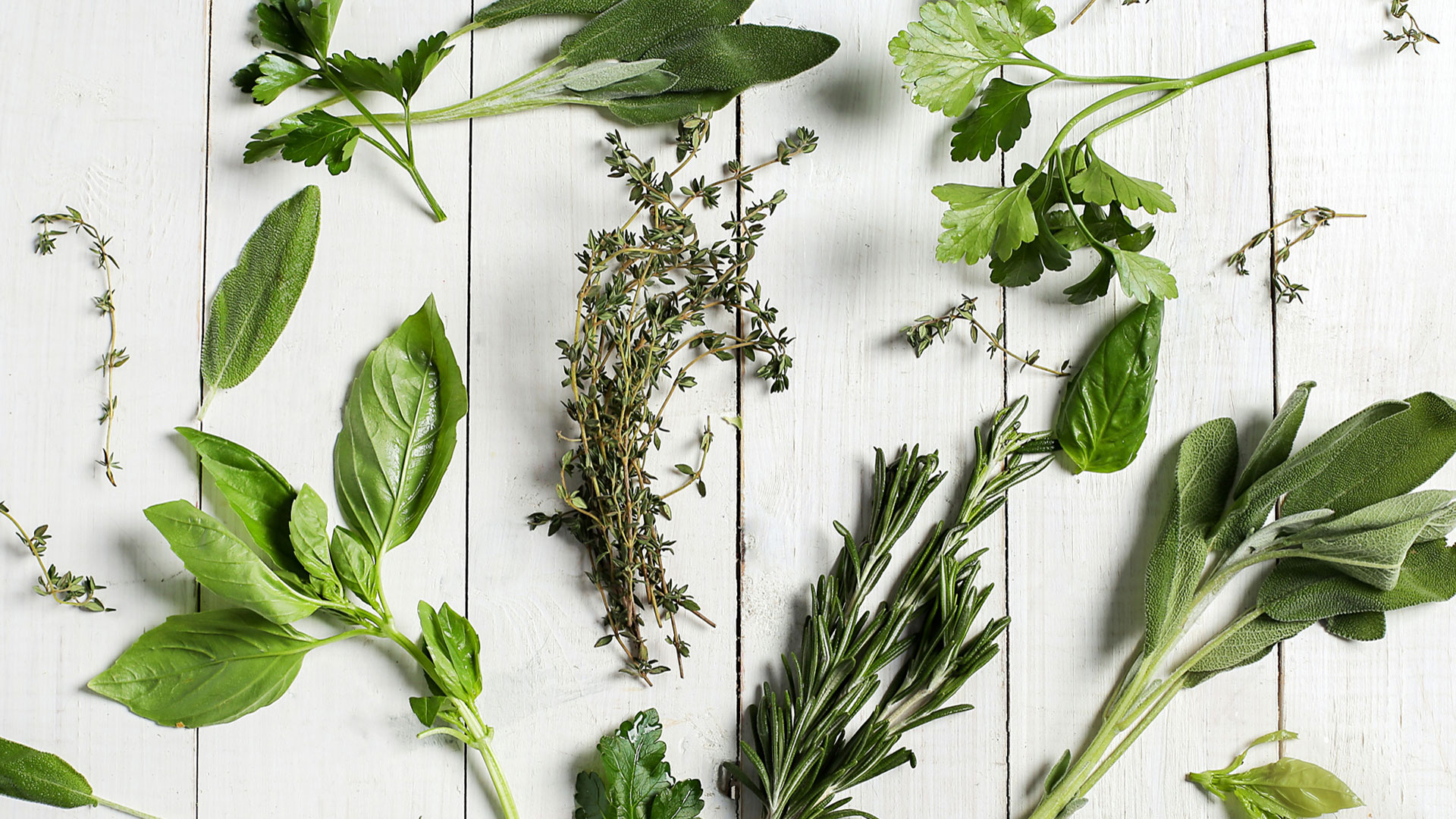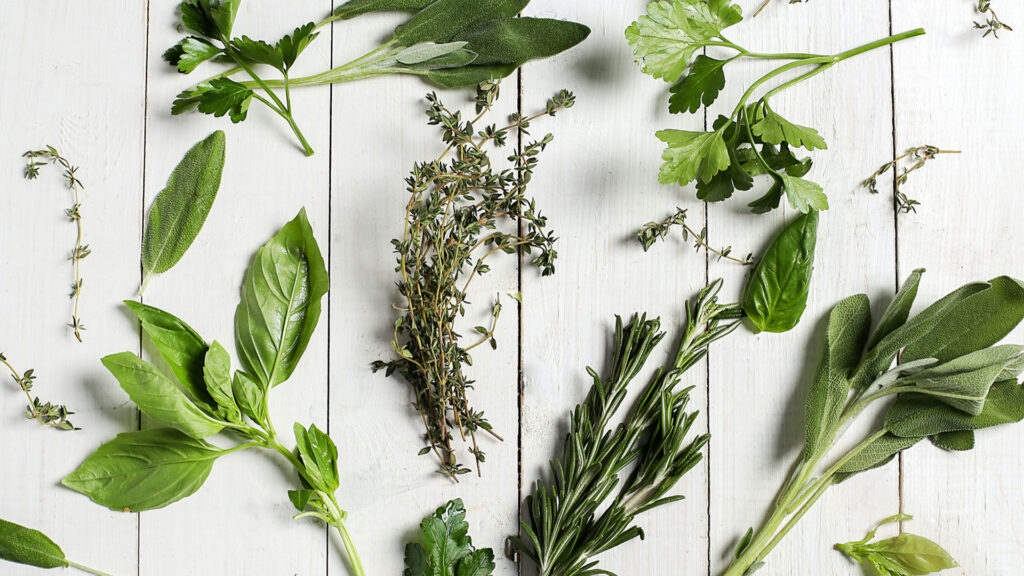Herbs play a vital role in completing gardens. Most often used for cooking, herbs provide the basis for medicinal treatments, they enhance the flavor and growth of companion vegetables, and quietly entice and redirect insect activity. The four listed below are easy to grow and will give a basic start to using herbs in almost any garden setting. As with all plants, use determines choices. Planting location determines feasibility. Analyze and set off with a shopping list.
Basil (Ocimum basilicum) – preferred pH is 5.5 to 7.5; plant in sun to partial shade for best growth and full flavor; provide moist, well-drained soils. When planting outdoors, direct seed one-quarter inch deep, 12- to 24-inches apart after all danger of frost has passed. Seeds will germinate in soil temperatures of at least 50 degrees F but do prefer soil temperatures closer to 70 degrees F. If starting seed indoors, plant in peat, or comparable product pots about six weeks before the last frost. As basil is quite cold sensitive, acclimate and move plants outside only after night temperatures are consistently above 50 degrees F. Pinch back the stems to just above the first or second set of leaves after six or more pairs of leaves have developed. Continuing pinching back the growing branches until the plant structure fills. Harvest leaves as desired, always leaving one-half to two-thirds of the plant intact to encourage new growth. Planted near tomatoes, peppers, eggplant, beans, potatoes, and celery, the scent of basil helps to confuse and redirect insect invaders.
Dill (Anethum graveolens) – pH of 5.5 to 6.5 is preferred; loves full sun but will tolerate partial shade, especially in hotter regions. As dill does not transplant well, direct seed outdoors after last frost. Plant seed one-quarter inch deep, spacing plants anywhere from 14- to 24-inches apart, depending on specific cultivar needs. If planted in a windy area, some of the larger cultivars may need staking. Harvesting may begin as soon as the fronds are a few inches tall, but be sure to leave enough of the plant to facilitate regrowth. Dill deters cabbage worm and moth activity plus it encourages beneficial insect activity. It does not play well with tomatoes, carrots, or potatoes.
Thyme (Thymus vulgaris) – pH tolerant from 6.0 to 8.0; full sun; loves the summer heat, humidity not so much; plants need well-drained soils with a sand/gravel base. Direct sowing thyme seed can be a challenge. Propagation success will be more easily attainable via cuttings or plant divisions. Plant care starts early in spring with a light shearing, removing old top growth to encourage a flush of new. Although flavor is most intense and oil content is highest right before full flower, harvest as desired any time throughout the year. Thyme is a tough plant that will tolerate most garden abuses if the roots are settled in a well-drained site. It does a good job of confusing many types of garden worms in strawberry beds and in all cole crops, but does not work well with cucumbers.
Greek Oregano (Origanum vulgare var. hirtum) – pH tolerant from 6.0 to 8.0; a Mediterranean plant, oregano likes full, bright sun, heat, and a very well-drained soil. If planting from seed, sow one-quarter inch deep. As seedlings come up, test intensity of the new leaves by tasting. Remove those that are less flavorful, saving the more intense for transplanting into the garden after night temps are consistently above 50 degrees F. Space plants about 18-inches apart and then get out of the way. Although Greek oregano will not spread as rampantly as the wild types, as a member of the mint family, it will spread. Take advantage of that spread by planting into areas that need ground cover. As it covers the ground, oregano provides cover for beneficial ground dwelling insects while repelling many of the caterpillar pests that plague the cole and lettuce crops. It plays well with beets, onions, and peas, improving the growth habit and flavor throughout the season. If the potential of spread proves daunting, avoid the whole issue and plant it in containers. Or try the more ornamental types that are less hardy and less likely to survive and thrive enough to annoy.

